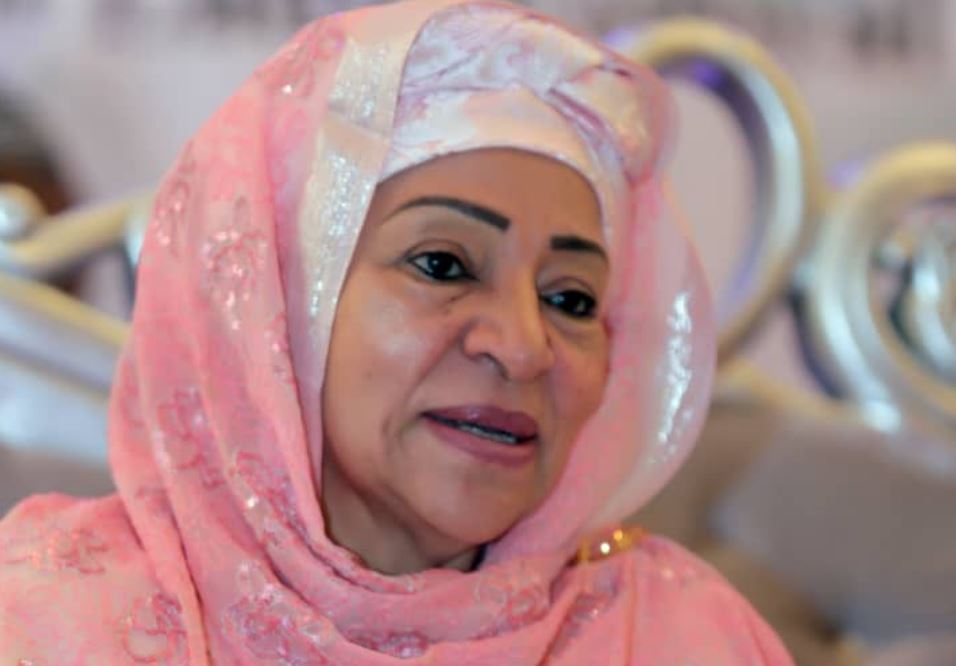Japan Facial Injectables Market Set to Reach Valuation of
Chicago, June 09, 2025 (GLOBE NEWSWIRE) -- The Japan facial injectables market was valued at US$ 508.18 million in 2024 and is projected to reach US$ 1,121.31 million by 2033, growing at a CAGR of 9.52% during the forecast period 2025–2033.
The Japan facial injectables market is experiencing a significant shift in consumer behavior with a growing preference for subtle, natural-looking enhancements over dramatic transformations. Younger demographics, particularly those in their 20s and 30s, are increasingly opting for preventative treatments like botulinum toxin to delay signs of aging. Social media platforms, such as Instagram and TikTok, play a pivotal role in shaping beauty ideals, with influencers promoting injectables as a routine part of self-care. Moreover, there is a noticeable rise in male consumers seeking facial injectables, driven by societal acceptance of male grooming and professional competitiveness.
This trend aligns with Japan's cultural emphasis on "kawaii" (cuteness) and polished aesthetics, pushing demand for products that enhance facial harmony. According to a 2024 survey by the Japan Aesthetic Medicine Association, over 60,000 men underwent injectable treatments last year, a sharp increase from previous years. Clinics in urban hubs like Tokyo and Osaka report a surge in demand for hyaluronic acid fillers for jawline contouring and under-eye rejuvenation. Additionally, the rise of hybrid work environments has reduced downtime concerns, encouraging more individuals to schedule quick procedures. As consumer awareness grows, brands are focusing on personalized treatment plans, ensuring safety and satisfaction in this evolving landscape of the Japan facial injectables market.
Key Findings in Japan Facial Injectables Market
| Market Forecast (2033) | US$1,121.31 million |
| CAGR | 9.52% |
| By Product Type | Botulinum Toxin/Botox (55.97%) |
| By Age Group | 35-50 Year (51.72%) |
| By Gender | Female (81.62%) |
| By Clinic Type | Dermatology Clinics (35.45%) |
| By Application | Wrinkle Reduction (39.97%) |
| Top Drivers | |
| Top Trends | |
| Top Challenges |
Technological Breakthroughs Redefining Aesthetic Treatments
In the Japan facial injectables market, technological innovation is a key growth driver with new formulations and delivery methods enhancing treatment precision and outcomes. Advanced micro-droplet injection techniques are gaining popularity for their ability to deliver natural-looking results, particularly for delicate areas like under-eyes. Additionally, AI-powered consultation tools are transforming patient experiences, enabling simulations of post-treatment results. Major brands are also developing longer-lasting fillers with biocompatible materials tailored to Asian skin types.
A report by the Japan Society of Aesthetic Surgery (JSAS) indicates that over 92,000 procedures utilized cutting-edge injection technologies last year, reflecting rapid market adoption. For instance, Galderma’s latest hyaluronic acid filler, designed for thinner skin textures common in Japanese patients, saw over 30,000 applications in clinics nationwide. The rise of telemedicine platforms has further democratized access, with over 25,000 virtual consultations recorded for injectables in 2024. These advancements not only improve patient satisfaction but also attract tech-savvy millennials. Stakeholders can capitalize on this trend by investing in training for practitioners on novel technologies and partnering with tech firms for digital tools, positioning themselves as leaders in the innovation-driven Japan facial injectables market.
Navigating Regulatory Hurdles in Aesthetic Innovations
The Japan facial injectables market operates under a stringent regulatory environment, prioritizing patient safety while posing challenges for market entrants. The Pharmaceuticals and Medical Devices Agency (PMDA) mandates rigorous clinical trials for new products, often requiring Japan-specific data, which delays launches compared to regions like the EU. Advertising restrictions further complicate brand visibility, as clinics cannot make direct claims about treatment outcomes without substantiated evidence, impacting consumer outreach.
Recent PMDA data from 2024 shows that approval times for new injectables have been reduced to an average of 10 months, down from 14 months in prior years, thanks to digital submission processes. However, only 1,200 certified dermatologists and plastic surgeons were licensed to perform advanced injectable treatments last year, limiting service availability. High-profile adverse reaction cases, such as a 2023 Tokyo incident involving off-label filler use affecting 50 patients, have tightened post-market surveillance. For stakeholders, navigating this landscape requires robust compliance strategies and investment in local clinical research. Building partnerships with certified practitioners and focusing on transparent communication can help overcome barriers in the Japan facial injectables market, ensuring trust and market penetration.
Disparities in Urban and Rural Demand Patterns
In the Japan facial injectables market, a significant urban-rural divide shapes demand dynamics as of 2024, driven by economic and accessibility factors. Urban hubs like Tokyo, Osaka, and Nagoya account for the majority of procedures, fueled by higher disposable incomes and exposure to global beauty trends via media. In contrast, rural regions lag due to fewer specialized clinics, lower awareness, and cultural hesitancy toward cosmetic enhancements, often viewing them as unnecessary or vain.
According to a study by the Japan Cosmetic Industry Association (JCIA), Tokyo recorded over 78,000 injectable procedures last year, while rural prefectures like Shimane reported fewer than 2,000. Urban clinics also cater to convenience-driven clients, offering extended hours and premium services, with over 35,000 bookings for same-day treatments in Osaka. Rural consumers often travel to cities, facing additional costs, with travel-related expenses for treatments estimated at over US$500 per trip for 10,000 individuals in 2024. Stakeholders can address this gap by deploying mobile clinics or partnering with telemedicine platforms to offer virtual consultations. Targeted awareness campaigns highlighting safety and benefits could also boost rural adoption in the Japan facial injectables market, unlocking untapped potential.
Competitive Dynamics Among Aesthetic Industry Players: Top 3 Players Control Nearly 60% Market Share
The Japan facial injectables market is fiercely competitive as of 2024, with global and local players battling for dominance through innovation and brand trust. International leaders like Allergan (Botox) Galderma, and Medytox Inc leverage their extensive portfolios and global reputation, focusing on products suited for Asian facial structures. These 3 players collectively hold over 60% market share. On the other hand, domestic firms, such as Koken Co., are gaining ground with cost-effective fillers and culturally aligned marketing, appealing to price-sensitive consumers seeking trusted local brands.
A 2024 report from the Japan Aesthetic Research Institute (JARI) notes that Allergan conducted over 55,000 Botox procedures last year, while Koken’s fillers were used in 28,000 treatments, reflecting growing local traction. Strategic collaborations are key, with Merz partnering with 300 Tokyo clinics in 2024 for exclusive training, enhancing practitioner expertise. Local players counter with affordability, pricing treatments US$50-100 lower per session than global brands. Social media campaigns, involving over 200 influencers last year, have also become critical for brand visibility. For stakeholders, differentiating through niche offerings—like male-specific treatments or eco-friendly fillers—and building practitioner networks can secure a foothold in the dynamic Japan facial injectables market, balancing global standards with local relevance.
Cultural Nuances Influencing Beauty Treatment Choices
Cultural nuances profoundly influence the Japan facial injectables market as of 2024, shaping beauty perceptions and treatment choices. The Japanese ethos of “mottainai” (avoiding waste) extends to maintaining a youthful appearance as a form of self-care and respect. Subtlety is prized, with consumers favoring injectables for minor enhancements like smoothing nasolabial folds over bold transformations, distinguishing Japan from markets like South Korea, where dramatic changes are often sought.
A survey by the Japan Beauty Institute (JBI) found that 72,000 respondents preferred fillers for natural corrections, with over 40,000 treatments focusing on fine lines. J-pop and anime aesthetics drive younger demographics, with 25,000 procedures last year inspired by idol-like features. However, conservative attitudes among older generations persist, with only 15,000 clients aged 50+ opting for injectables due to stigma. Clinics in the Japan facial injectables market are reframing treatments as wellness solutions, hosting over 100 awareness seminars in 2024 to destigmatize aesthetics. Stakeholders can tap into this cultural landscape by emphasizing natural results and aligning with local beauty ideals. Tailored campaigns targeting younger and male demographics could further accelerate adoption in the market, blending tradition with modern aspirations.
Economic Factors Steering Aesthetic Spending Trends
Economic factors significantly impact the Japan facial injectables market as of 2024, with disposable income and cost pressures shaping consumer behavior. Japan’s economy faces challenges like wage stagnation, limiting spending on non-essential services for middle- and lower-income groups. Urban professionals, however, view injectables as a career investment, prioritizing image in competitive job markets. Economic disparities thus create a segmented market where affluent areas drive the bulk of demand.
A economic analysis by the Japan Finance Ministry highlights that import costs for foreign injectables rose in the facial injectables market due to a weaker yen, increasing treatment prices by US$20-30 per session in over 500 clinics. Despite this, demand in high-income Tokyo districts saw 58,000 procedures last year. Post-pandemic recovery has spurred discretionary spending, with over 30,000 young professionals using annual bonuses for aesthetics in 2024. Medical tourism, supported by government initiatives, also shows promise, with 5,000 international clients seeking treatments last year. Stakeholders can navigate economic constraints by offering tiered pricing or payment plans, ensuring accessibility. Leveraging tourism by marketing Japan as an aesthetic hub could further boost the market, aligning economic strategies with consumer realities.
Future Horizons for Aesthetic Treatment Innovations
Looking forward, the Japan facial injectables market is poised for robust growth with emerging trends offering significant opportunities for stakeholders. Personalized treatments, aided by genetic profiling for customized fillers, are on the horizon, while male and senior demographics present untapped markets. Sustainability is also gaining traction, with biodegradable fillers attracting eco-conscious clients. The market is set to benefit from Japan’s aging population, projected to drive demand for rejuvenation treatments.
A forecast by the Japan Aesthetic Technology Forum predicts 45,000 users will adopt AR-based consultation tools by next year, enhancing treatment planning. Rural expansion via mobile clinics could reach 20,000 new clients annually, based on pilot programs in 2024. Global investment in Japanese aesthetic R&D is also rising, with over US$10 million allocated to local startups last year for innovative injectables. Challenges like regulatory delays and economic pressures remain, but strategic partnerships with tech firms and localized marketing can mitigate risks. For stakeholders, focusing on education, accessibility, and niche innovations—such as male-specific products—will be key to capitalizing on the evolving Japan facial injectables market, positioning Japan as a global leader in aesthetic advancements.
Japan Facial Injectables Market Major Players:
Key Segmentation:
By Product Type
By Age Group
By Gender
By Clinic Type
By Application
- Lip Augmentation
- Face Lift
- Facial Contouring
- Acne Scar Treatment
- Lipoatrophy Treatment
- Others
Astute Analytica is a global market research and advisory firm providing data-driven insights across industries such as technology, healthcare, chemicals, semiconductors, FMCG, and more. We publish multiple reports daily, equipping businesses with the intelligence they need to navigate market trends, emerging opportunities, competitive landscapes, and technological advancements.
With a team of experienced business analysts, economists, and industry experts, we deliver accurate, in-depth, and actionable research tailored to meet the strategic needs of our clients. At Astute Analytica, our clients come first, and we are committed to delivering cost-effective, high-value research solutions that drive success in an evolving marketplace.
Astute Analytica
Phone: +1-888 429 6757 (US Toll Free); +91-0120- 4483891 (Rest of the World)
For Sales Enquiries:
Website: https://www.astuteanalytica.com/
Follow us on: | | YouTube










